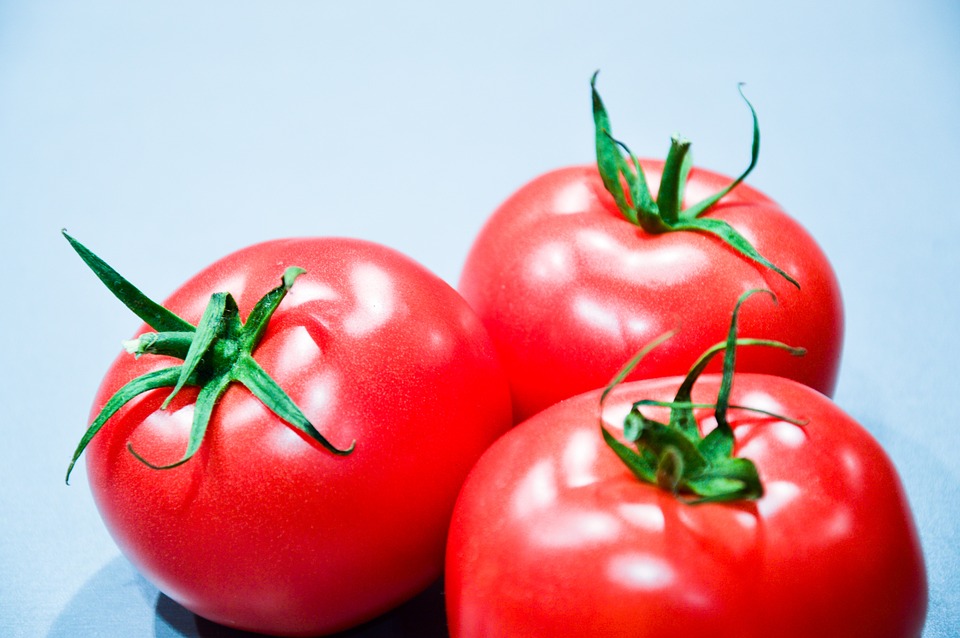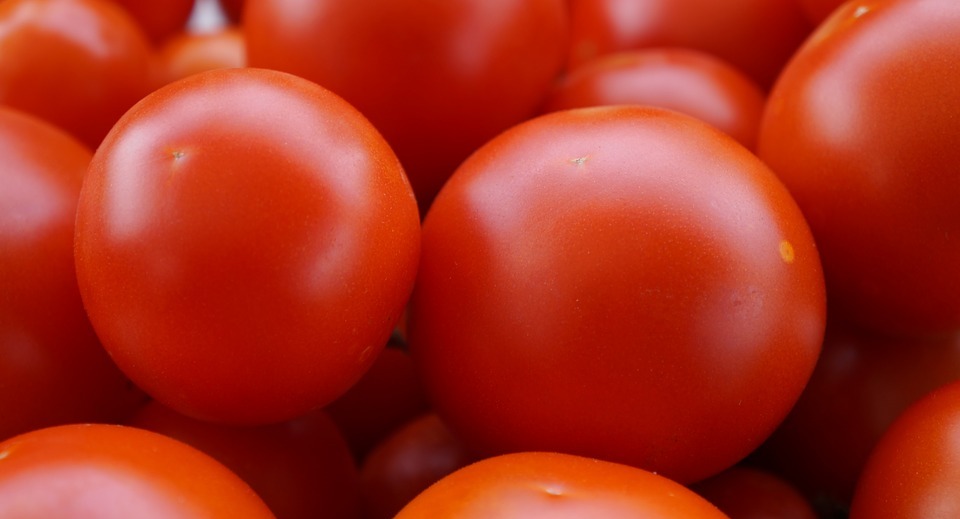This article will delve into the question of whether tomatoes are safe for dogs to consume, providing a comprehensive guide for dog owners. We'll explore the different parts of the tomato plant, examine the potential risks associated with them, and offer clear guidance on how to keep your furry friend safe. We'll also address common questions regarding tomatoes and dogs, offering detailed answers to ensure you have a complete understanding.
Part 1: Tomatoes: A Closer Look

1.1. The Tomato Plant: A Nightshade with a Twist
Tomatoes, a popular ingredient in many cuisines, belong to the nightshade family (Solanaceae). This family is known for its diverse range of plants, some of which contain potent substances that can be toxic to humans and animals. The tomato plant, however, presents a unique case.
1.2. Tomatine: The Key Player in Toxicity
The main culprit behind the potential toxicity of tomatoes for dogs is tomatine. This glycoalkaloid is a naturally occurring compound found throughout the tomato plant. Tomatine plays a role in protecting the plant from pests and diseases.
1.3. Where Tomatine Concentrates: A Guide to Risk
Tomatine is most concentrated in the leaves, stems, and unripe green fruits of the tomato plant. As the fruit ripens and turns red, tomatine levels naturally decrease. However, it's important to remember that even ripe tomatoes contain some levels of this compound.
1.4. The Influence of Variety: Not All Tomatoes Are Created Equal
The concentration of tomatine can vary depending on the specific variety of tomato. Some varieties, such as heirloom tomatoes, might have higher tomatine levels compared to commercially grown varieties.
1.5. Ripe Tomatoes: A Lower Risk, but Not Risk-Free
While ripe, red tomatoes generally contain lower levels of tomatine compared to green tomatoes, it's still crucial to exercise caution. The amount of tomatine present in ripe tomatoes can vary depending on the factors mentioned above.
Part 2: The Risks of Tomatoes for Dogs

2.1. Gastrointestinal Distress: The Common Consequence
Tomatine, even in small quantities, can cause gastrointestinal upset in dogs. This can manifest as:
- Vomiting
- Diarrhoea
- Abdominal pain
- Loss of appetite
2.2. More Serious Symptoms: Rare but Possible
In extreme cases, large quantities of green tomatoes or tomato plant parts can lead to more serious complications. These include:
- Weakness
- Lethargy
- Tremors
- Seizures
2.3. Individual Sensitivity: A Factor to Consider
It's crucial to remember that dogs can exhibit varying levels of sensitivity to tomatine. Some dogs might experience no ill effects from a small amount of ripe tomato, while others might react negatively even to small quantities. Factors like age, breed, and overall health can influence individual sensitivity.
Part 3: Keeping Your Dog Safe: A Guide to Responsible Feeding

3.1. The Golden Rule: Avoid All Tomato Plant Parts
To err on the side of caution, it's best to completely avoid feeding your dog any part of the tomato plant, including the leaves, stems, and unripe fruits. This is the most effective way to ensure your dog's safety.
3.2. Ripe Tomatoes: A Controlled Approach (If Necessary)
If you choose to share a small amount of ripe, red tomato with your dog, ensure that:
- It's fully ripe and free from any green parts.
- It's served in small portions.
- You monitor your dog for any signs of adverse reactions.
- You consult your veterinarian to ensure this is suitable for your dog's individual needs.
3.3. Cooked Tomatoes: A Potential Option, But Proceed with Caution
While not recommended for regular consumption, some argue that cooking tomatoes can potentially reduce tomatine levels. However, it's still best to err on the side of caution and avoid offering cooked tomatoes to your dog. The effects of cooking on tomatine levels are not fully understood.
Part 4: Signs of Tomato Toxicity: Recognising the Warning Signs
4.1. Be Vigilant: Monitor Your Dog for Symptoms
If you suspect your dog has ingested tomato plant parts, it's crucial to be aware of potential symptoms. Watch for:
- Vomiting
- Diarrhoea
- Abdominal pain
- Loss of appetite
- Weakness
- Lethargy
- Tremors
- Seizures
4.2. Immediate Action: Contact Your Veterinarian
Should you notice any of these symptoms after your dog has potentially consumed tomatoes, it's essential to contact your veterinarian immediately. Timely intervention can significantly improve your dog's chances of a full recovery. Be prepared to provide your veterinarian with details about the incident, including the type of tomato and the amount ingested.
Part 5: Alternative Treats: Safe and Delicious Options
5.1. A World of Choices: Safe and Delicious Alternatives
There are many safe and delicious alternatives to tomatoes that you can offer your dog as treats. Some great options include:
- Carrots
- Apples (without seeds)
- Bananas
- Blueberries
- Peanut butter (unsweetened and xylitol-free)
5.2. Consult Your Vet: Tailoring Treats to Your Dog
Remember to consult your veterinarian before offering any new foods to your dog, especially if they have any pre-existing health conditions or allergies. They can help determine the appropriate types and amounts of treats for your furry companion.
Part 6: FAQs: Addressing Common Questions
6.1. Are tomato sauces and ketchup safe for dogs?
While some tomato sauces and ketchups might contain small amounts of tomatoes, they often include added ingredients that can be harmful to dogs, such as onions, garlic, and spices. It's best to avoid offering these products to your canine companion.
6.2. Can I give my dog tomato soup?
Tomato soup is generally not recommended for dogs as it usually contains onions and garlic, both of which are toxic to canines. Additionally, some tomato soups contain seasonings and spices that could upset your dog's digestive system.
6.3. What if my dog eats a tomato from my garden?
If your dog consumes a tomato from your garden, carefully observe them for any symptoms of toxicity. Contact your veterinarian if you notice any adverse reactions. Provide them with information about the variety of tomato and any other details about the incident.
6.4. What if my dog has eaten a whole tomato?
If your dog has ingested a whole tomato, it's crucial to contact your veterinarian immediately, regardless of whether you see any symptoms. They will assess the situation and provide appropriate guidance.
6.5. Are cherry tomatoes safe for dogs?
While cherry tomatoes contain lower levels of tomatine than larger tomatoes, it's still best to avoid offering them to your dog. The size and potential for choking make them a risky choice.
6.6. Can I give my dog tomato leaves as a treat?
Tomato leaves are highly toxic to dogs and should never be given to them. The high concentration of tomatine can lead to severe health complications.
6.7. My dog seems fine after eating tomatoes. Should I be worried?
Even if your dog appears healthy after consuming tomatoes, it's essential to monitor them closely for any signs of adverse reactions. Some symptoms might not appear immediately. If you have any concerns, contact your veterinarian for advice.
Everyone is watching
-

Can Dogs Eat Bananas? A Guide to Safe Treats
DOGS & PUPPIESThis comprehensive guide will delve into the world of canine nutrition, focusing on the popular question: can ...
-

Can Dogs Eat Oranges? (Is It Safe or Toxic?)
DOGS & PUPPIESThis article delves into the question of whether dogs can safely consume oranges. We'll explore the nutrition...
-

Can Dogs Eat Grapes? The Shocking Truth About This Fruit
DOGS & PUPPIESThis article delves into the controversial topic of grapes and dogs, exploring the potential dangers associate...
-

Why Do Dogs Eat Poop? Understanding Coprophagia in Dogs
DOGS & PUPPIESThis article delves into the perplexing phenomenon of coprophagia, the act of eating faeces, in dogs. We explo...
-

Can Dogs Eat Shrimp? A Guide to Safety and Risks
DOGS & PUPPIESThis comprehensive guide dives into the world of shrimp and dogs, exploring the potential benefits and risks a...
